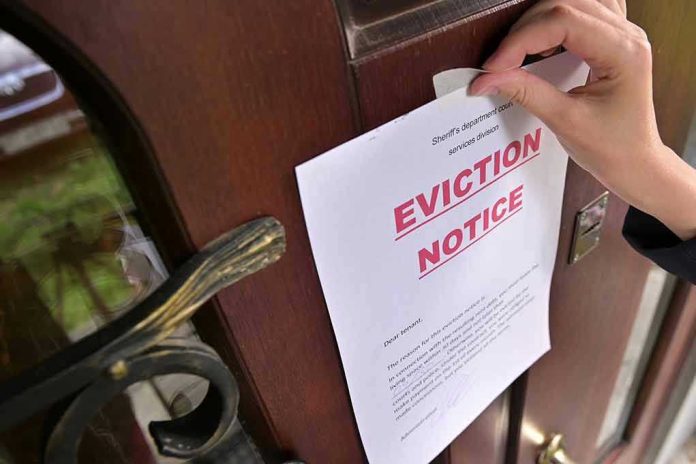
Government emergency rent assistance programs could mean the difference between having a roof over your head or facing eviction.
Story Overview
- Emergency rent assistance programs were created to prevent evictions during financial crises.
- Funding was initiated with the Consolidated Appropriations Act and American Rescue Plan Act.
- Programs are time-sensitive and depend on state and local administration.
- Eligibility criteria and application processes vary by location.
Understanding Emergency Rent Assistance
Emergency Rent Assistance (ERA) programs emerged as a critical response to the economic challenges posed by the COVID-19 pandemic. These programs are federally funded but locally administered, aiming to prevent evictions by providing financial support to eligible renters. The initial funding was authorized in December 2020 with the Consolidated Appropriations Act, followed by additional support through the American Rescue Plan Act in March 2021. These programs have distributed billions of dollars to stabilize housing for millions of Americans.
Understanding the timeline and structure of these programs is crucial. The ERA1 program began implementation in early 2021, followed by ERA2, which continued to support renters in need. However, these initiatives are not indefinite. Many states are currently transitioning from federal to state-funded programs, which often come with new rules and eligibility criteria. For instance, Colorado is moving to a state-funded program with different requirements, highlighting the need for renters to stay informed about local changes.
Eligibility and Application Processes
To access emergency rent assistance, renters must meet specific eligibility criteria, which generally include income limits and proof of financial hardship due to the pandemic. Documentation such as rental agreements and arrears notices are typically required. The application process varies by state and locality, and it is vital for renters to apply through their local government portals. Payments are made directly to landlords and utility companies, ensuring that the assistance goes where it’s needed most.
With the looming sunset dates and limited funding, urgency is key. Many programs are on the brink of closing, with some states planning to shut down their ERA initiatives by September 2025. Renters should act swiftly to secure the assistance they need before funds run out. This urgency underscores the critical nature of staying updated on local program statuses and deadlines.
The Impact and Challenges
The impact of these programs has been significant, preventing millions of evictions and stabilizing housing for vulnerable populations. However, challenges persist. Outreach efforts face hurdles due to complex application processes and the need for landlord cooperation. Some states hold funds for extended periods if landlords are difficult to locate, which can delay the assistance renters desperately need. As federal funding wanes, the transition to state-funded programs may create confusion and leave gaps in support.
Despite these challenges, the benefits of emergency rent assistance programs are undeniable. They have provided a lifeline for low-income renters, particularly those from minority communities, who are disproportionately affected by housing instability. The programs have also highlighted systemic disparities, prompting calls for permanent solutions to the affordable housing crisis.
Looking Forward
As the landscape of emergency rent assistance evolves, stakeholders must focus on ensuring continued support for those in need. Advocacy groups and legal aid organizations play a crucial role in assisting renters with applications and navigating disputes. Policymakers are urged to consider long-term strategies to address housing affordability and prevent future crises. Streamlining application processes and expanding eligibility could enhance the effectiveness of these programs, ensuring that assistance reaches those who need it most.
In conclusion, while emergency rent assistance programs have provided critical support during a time of unprecedented need, ongoing efforts are necessary to maintain housing stability for vulnerable populations. Renters must remain vigilant and proactive in seeking assistance, and policymakers should prioritize sustainable solutions to the ongoing housing crisis.
Sources:
Colorado Emergency Rental Assistance













